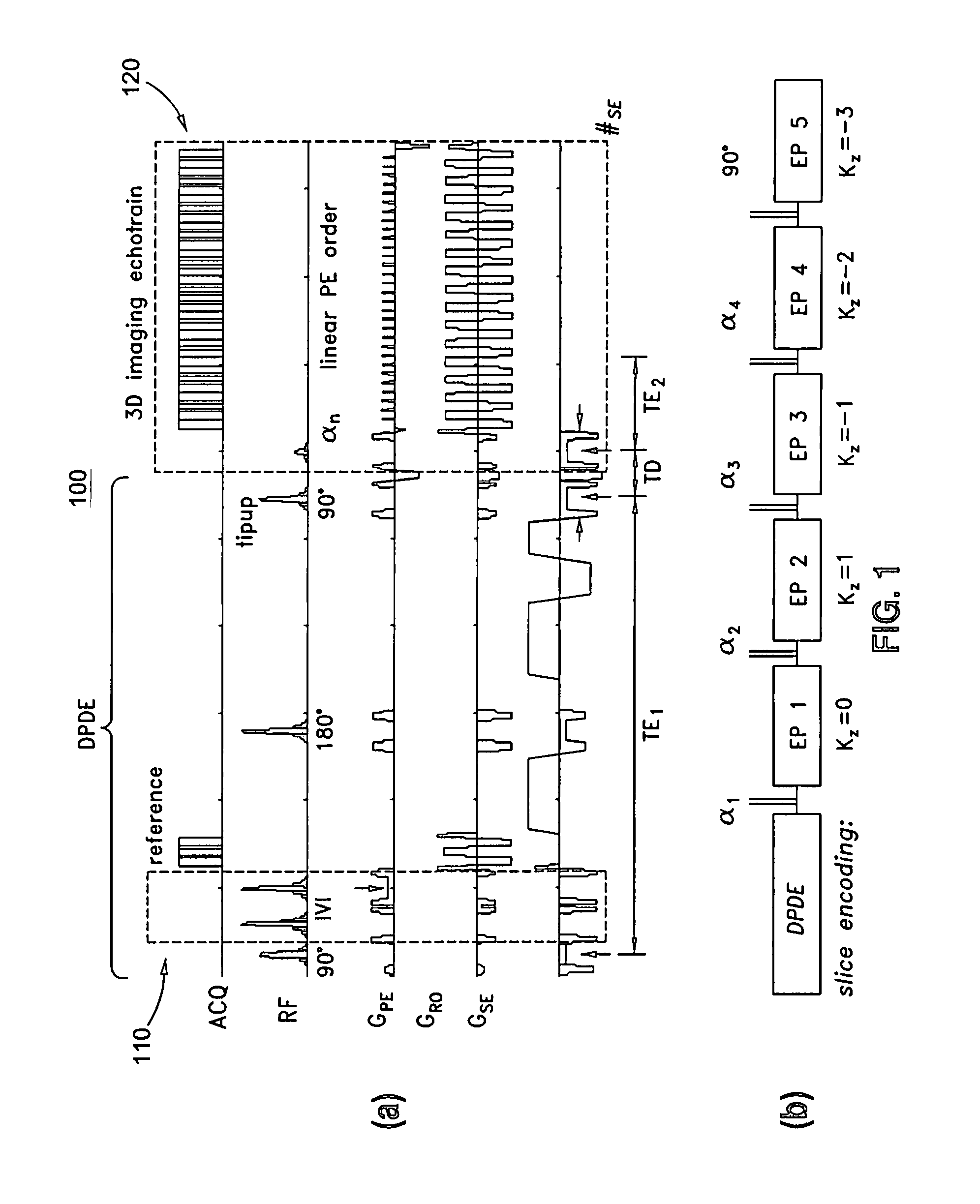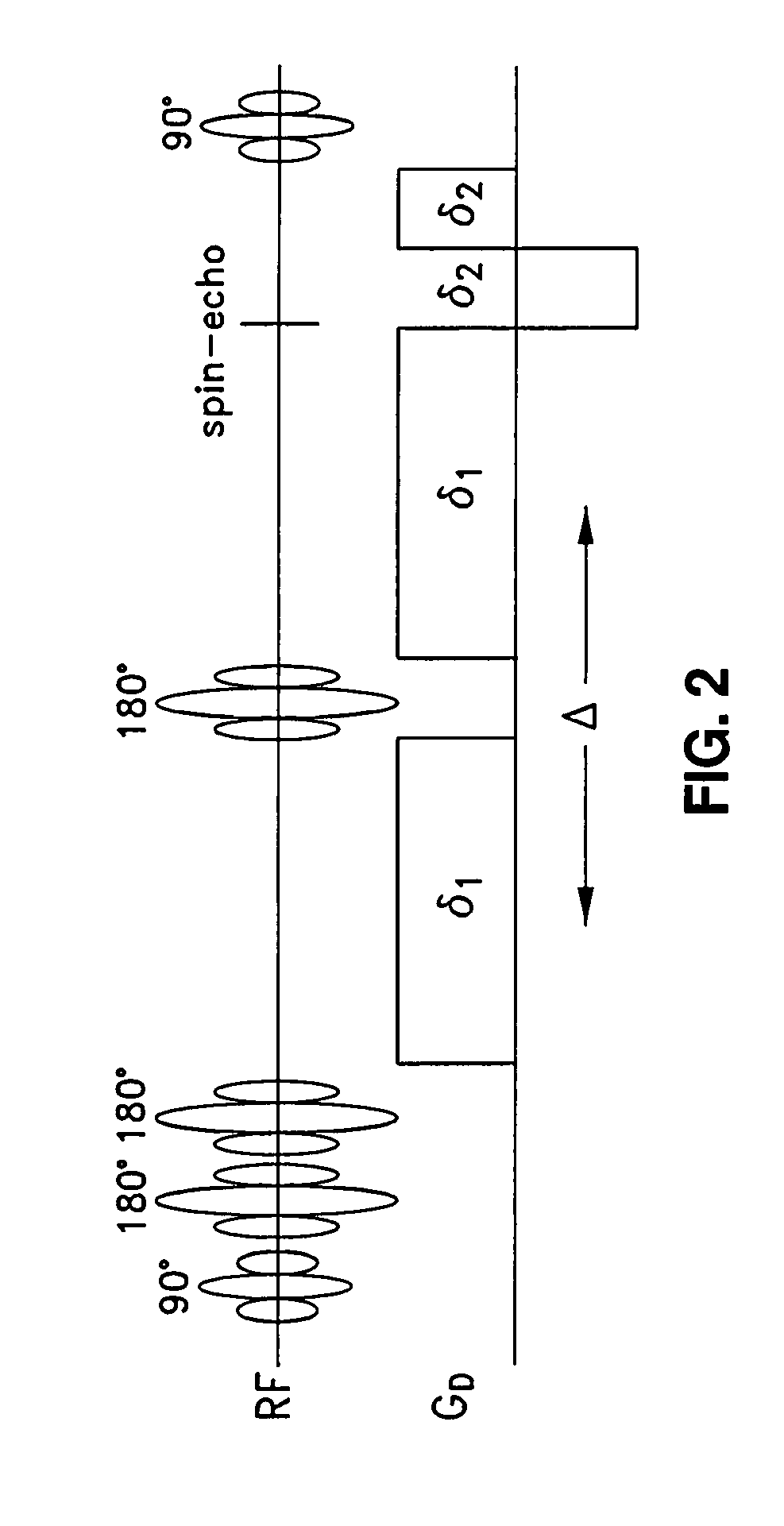Systems and methods for magnetic resonance imaging
a magnetic resonance imaging and magnetic resonance imaging technology, applied in the field of magnetic resonance imaging, can solve the problems of small neural structures such as spinal cord or optic nerve, and difficult to achieve in vivo high resolution dti of brain regions near temporal bone or sinuses, and achieve the effect of high resolution dti of brain regions near the temporal bone or sinuses, and increase the duration of data
- Summary
- Abstract
- Description
- Claims
- Application Information
AI Technical Summary
Benefits of technology
Problems solved by technology
Method used
Image
Examples
Embodiment Construction
[0047]An improved three-dimensional (3D) singleshot stimulated echo planar imaging (3D ss-DWSTEPI or ss-STEPI or STEPI) is presented which includes a novel technique to perform 3D singleshot DWI and DTI of a restricted 3D volume. In certain embodiments, 3D ss-DWSTEPI acquires 3D raw data from a limited 3D volume after a single diffusion-prepared driven-equilibrium (DPDE) preparation by short EPI readouts of several stimulated echoes. In certain embodiments, the raw data includes k-space data. In certain embodiments, the raw data includes data that has not undergone any transformation. The EPI readout time is preferably shortened by using an inner volume imaging (IVI) technique along the phase-encoding direction.
[0048]In certain embodiments, 3D ss-STEPI may be used to image any localized anatomical volume within a body without aliasing artifact and with high-resolution. The results from 3D ss-STEPI imaging studies of phantoms, an excised animal heart, and in vivo results from human v...
PUM
 Login to View More
Login to View More Abstract
Description
Claims
Application Information
 Login to View More
Login to View More - R&D
- Intellectual Property
- Life Sciences
- Materials
- Tech Scout
- Unparalleled Data Quality
- Higher Quality Content
- 60% Fewer Hallucinations
Browse by: Latest US Patents, China's latest patents, Technical Efficacy Thesaurus, Application Domain, Technology Topic, Popular Technical Reports.
© 2025 PatSnap. All rights reserved.Legal|Privacy policy|Modern Slavery Act Transparency Statement|Sitemap|About US| Contact US: help@patsnap.com



